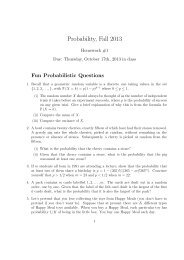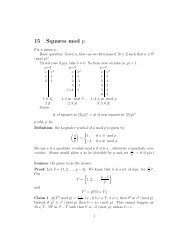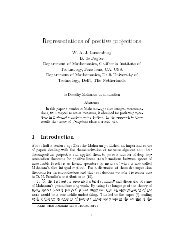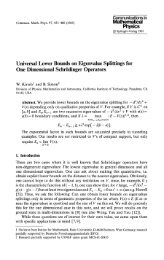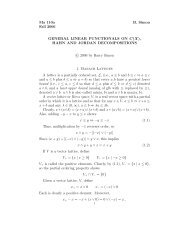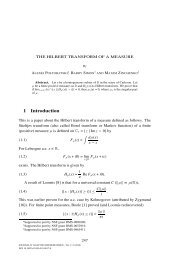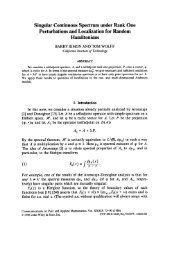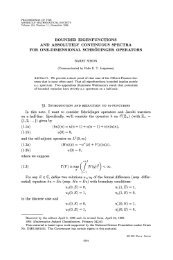16 The Quadratic Reciprocity Law - Caltech Mathematics Department
16 The Quadratic Reciprocity Law - Caltech Mathematics Department
16 The Quadratic Reciprocity Law - Caltech Mathematics Department
Create successful ePaper yourself
Turn your PDF publications into a flip-book with our unique Google optimized e-Paper software.
Sketch of proof of lemma: Use induction on n to show that<br />
sin nx<br />
sin x = fn(sin 2 x),<br />
where fn is a polynomial in sin 2 x of degree n−1<br />
2 .<br />
(f0(t) =1,f3(t) =3− 4t,...)<br />
On the other hand, the RHS of lemma is also of the form gn(sin 2 x), where<br />
gn is the explicitly given polynomial in sin 2 x of degree n−1<br />
2 .<br />
So it suffices to show that fn and gn have the same roots and that the<br />
leading coefficient of fn is (−4) n−1<br />
2 . So when we use induction on n, check<br />
that the leading coefficient is (−4) (n−1)<br />
2 and that its roots are<br />
<br />
<br />
2 2πj<br />
sin <br />
n − 1<br />
n 1 ≤ j ≤ .<br />
2<br />
Alternatively, check the constant coefficient by checking at x → 0.<br />
Recall Gauss’ lemma: <br />
q<br />
=<br />
p<br />
<br />
es(q)<br />
s∈S<br />
where S = {1, 2,..., p−1<br />
2 } and ex(q) ∈{±1} defined by<br />
Applying sin( 2π),<br />
we get<br />
p<br />
qs = es(q)s ′ , with s ′ ∈ S.<br />
<br />
2πqs 2πes(q)s<br />
sin =sin<br />
p<br />
′ <br />
p<br />
′ 2πs<br />
= es(q)sin<br />
p<br />
since sin is an odd function. So<br />
<br />
2πqs<br />
sin p<br />
es(q) = <br />
2πs ′<br />
sin<br />
10<br />
p



